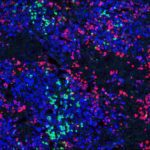About
Hepatitis B virus (HBV), hepatitis C virus (HCV) and Plasmodium falciparum are three major human hepatic pathogens, which together are responsible for more than 500 million infections worldwide and 2.5 to 4.5 million deaths annually. The development of innovative preventive and therapeutic strategies has been strongly hampered by the lack of convenient small animal models.
Although human hepatocyte xenografts in immunodeficient uPA and FAH-based mouse models allow certain aspects of the natural course of HCV and HBV infection to be analyzed, these models cannot be used to decipher the protective or pathophysiological effects of anti-viral immune responses on infected hepatocytes. In order to understand the role for immune cross-talk in viral hepatitis, a functional human immune system needs to present. In contrast to virus-infected patients, chimpanzees less frequently develop chronic hepatitis, characterized by advanced liver disease and hepatocarcinoma. Since current humanized liver mice models (uPA and FAH) are generated in immunodeficient mouse hosts, the study of virus-host immune interactions, viral evasion and pathogenesis of virus-induced liver disease is limited and the preclinical investigation of novel immunotherapies and vaccines are not possible.
Thus, the development of mouse models harboring both human immune cells and human hepatocytes will address an urgent need of the academic research community as well as the pharmaceutical industry to develop immunotherapies and vaccines against viral hepatitis.





